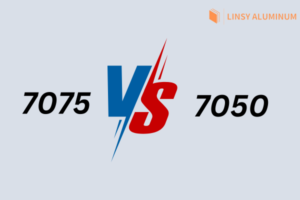Key Highlights
- Aluminum and Titanium both have a high Strength-to-Weight Ratio. However, Titanium is better at fighting corrosion and heat.
- Aluminum is much cheaper to make than Titanium.
- Titanium is used in areas like aerospace, medical implants, and high-performance products. Here, doing well is more important than cost.
- Aluminium is a favorite in fields such as automotive, construction, and packaging. This is because it is budget-friendly and very versatile.
- The decision between these metals relies on several factors, like budget, weight limits, strength needs, and the conditions where they will be used.
- Engineers and manufacturers must know the unique properties of Aluminium and Titanium. This helps them pick the appropriate material for their projects.
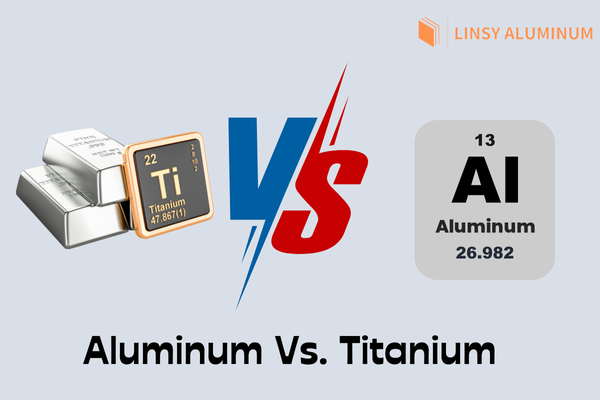
Introduction
Choosing the right material is crucial for any engineering or manufacturing project. To do so, you must understand the properties of different metals and how they perform in specific applications.
This article compares aluminum and titanium, two key metal materials. Both materials are popular because they are lightweight, strong, and corrosion-resistant. However, their production costs differ, and they work better in different situations. By looking at their strengths and weaknesses, we hope to help you understand when to use Aluminum or Titanium.
Understanding the Basics of Aluminum and Titanium
Aluminium and Titanium are both metals found in nature. Titanium has an atomic number of 22, and Aluminium has an atomic number of 13. Titanium is much less common than aluminum, which contributes to its higher cost. Even though they are not widely available, both metals are known for their low density and high strength (high Strength-to-Weight Ratio). At the same time, the density of titanium is also a significant factor to consider.
The special blend of Aluminium and Titanium makes them very useful. Aluminum is light, doesn’t rust, and carries heat and electricity well. with good conductivity. Titanium is strong considering its weight, has a high melting point, and can resist heat and chemicals. These qualities make them popular in various industries.
Aluminum Vs. Titanium: Key Differences
Key Properties of Aluminum and Titanium
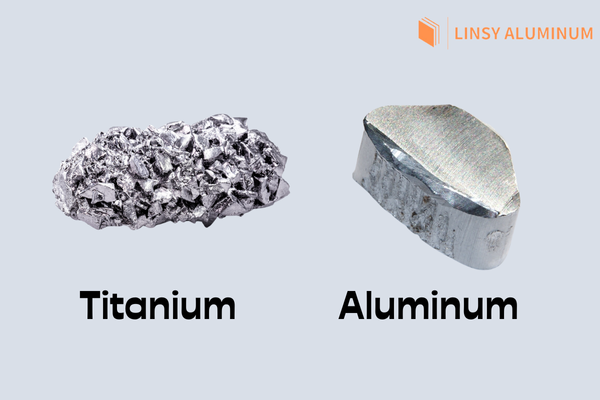
Property | Aluminium | Titanium |
Melting Point | 660 °C | 1650 °C |
Tensile Strength | 70–700 MPa (varies by alloy) | 900–1200 MPa (varies by grade) |
Corrosion Resistance | Excellent (forms oxide layer) | Exceptional (even in saltwater) |
When we check their main properties, we notice some big differences between Aluminium and Titanium.
- Titanium melts at a much higher temperature than Aluminium.
- Titanium alloys often have stronger tensile strength than Aluminium alloys.
- Both metals have excellent corrosion resistance
Strength-to-Weight Ratio
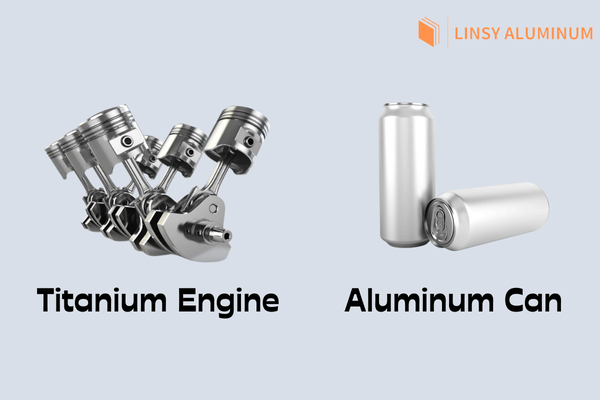
Property | Aluminum | Titanium |
Strength-to-Weight Ratio | ~158 kN·m/kg (maximum, alloy-dependent) | ~187 kN·m/kg (alloy-dependent) |
Tensile Strength | 140–690 MPa | 345–1,380 MPa |
Density | ~2.7 g/cm³ | ~4.5 g/cm³ |
Cost | Lower | Higher |
The strength-to-weight ratio is key in industries such as aerospace, automotive, and sporting goods. It is important to understand how Aluminium compares with Titanium, which has a significantly lower density, in this aspect. This understanding helps in making good choices for material selection.
In summary, titanium outperforms aluminum in strength-to-weight ratio but is heavier and more expensive. Aluminum remains an excellent choice for projects that balance strength with cost efficiency.
Corrosion and Temperature Resistance
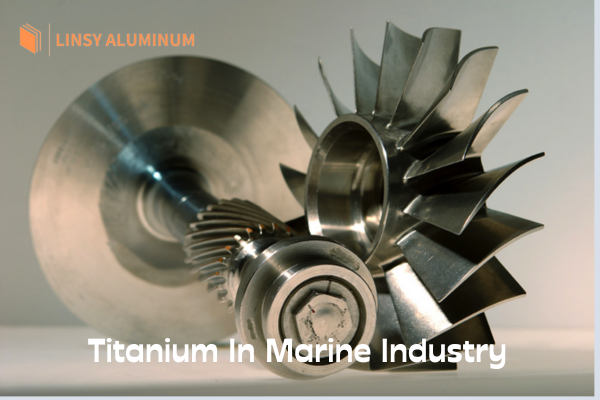
Property | Aluminum | Titanium |
|---|---|---|
Protective Layer | The oxide layer (alumina) is less effective in acids, alkalis | Titanium dioxide (TiO₂) layer, superior resistance to air, water, acids, alkalis |
Applications | General-purpose environments with moderate exposure to corrosive elements (e.g., packaging, construction). | Ideal for marine, aerospace, chemical processing, and medical applications due to its exceptional corrosion resistance |
Titanium provides much better corrosion resistance than aluminum in harsh or chemically aggressive environments(strong acids, alkalis). Aluminum’s corrosion resistance is sufficient for everyday use but requires coatings in extreme conditions.
Property | Aluminum | Titanium |
|---|---|---|
Melting Point | ~660°C | ~1668°C |
Strength Retention | Retains strength only up to ~250°C | Retains strength only up to ~250°C |
Thermal Conductivity | ~205–235 W/m·K | ~6–20 W/m·K |
Applications | Heat Sinks, Radiators, and heat exchangers (Due to its high thermal conductivity) | Aerospace Engines (Due to its excellent strength retention) |
Recommendations
- Choose Aluminum If: The application requires good corrosion resistance in moderate conditions or high thermal conductivity (e.g., electronics, automotive radiators).
- Choose Titanium If: The project demands exceptional corrosion resistance or performance at high temperatures (e.g., aerospace components, marine hardware).
Machinability

The machinability of aluminum and titanium differs significantly due to their physical and mechanical properties. Below is a detailed comparison to help understand their performance in machining processes:
Property | Aluminum | Titanium |
Ease of Machining | High: Aluminum is soft, lightweight, and easy to machine with high cutting speeds. | Low: Titanium is harder, tougher, and requires slower cutting speeds due to its strength and poor thermal conductivity. |
Surface Finish | Produces smooth surfaces with less friction during machining. | Achieving a smooth surface is more challenging due to titanium’s higher hardness and tendency for galling. |
Cost of Machining | Low: Faster machining speeds and reduced tool wear make aluminum more cost-effective. | High: Slower machining speeds, frequent tool changes, and additional cooling requirements increase costs. |
Applications | Used in high-volume production where cost-efficiency is critical (e.g., automotive parts, consumer electronics). | Preferred for aerospace components, medical implants, or other high-performance applications |
Recommendations:
- Choose aluminum: Projects prioritizing speed, cost-efficiency, and ease of machining.
- Choose Titanium: Opt for titanium when strength, durability under stress, or resistance to harsh environments is essential despite higher machining costs.
Pros and Cons Of Each Material
Pros and Cons Of Aluminum
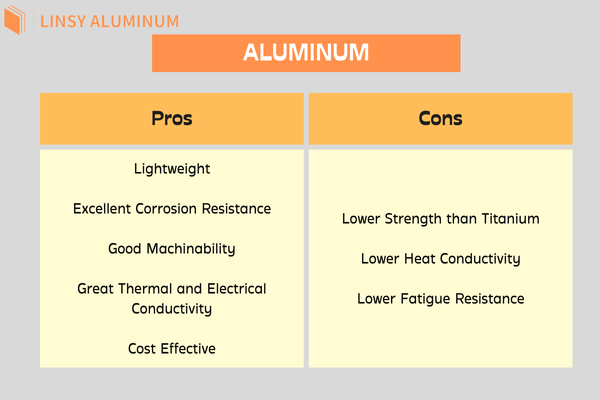
Pros and Cons Of Titanium
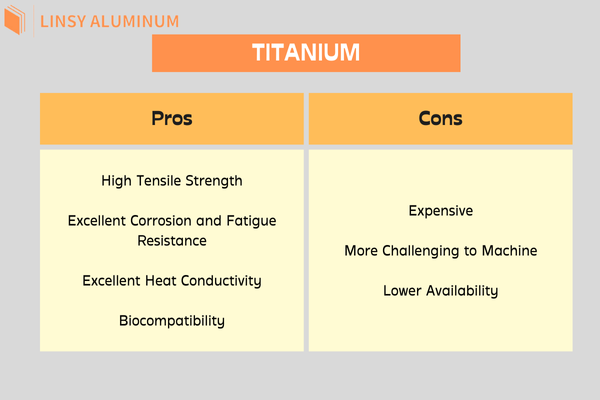
How to Choose Between Aluminum and Titanium?
Choosing the right material, such as Aluminium or Titanium, is important. This decision depends on how you will use it and what you need for your project. You should also consider your budget. Before you decide, it is good to know the unique properties of each material.
Start by taking some time to think about what matters most:
Choose Titanium If:
- Your project demands extreme strength, heat resistance, or corrosion resistance (e.g., jet engine parts, deep-sea equipment).
- Biocompatibility is required (e.g., medical implants).
- The budget allows for higher material and machining costs.
Choose Aluminum If:
- Lightweight design and cost efficiency are priorities (e.g., consumer electronics vehicle bodies).
- High thermal/electrical conductivity is needed.
- The application does not require extreme strength or environmental resistance.
Conclusion
In conclusion, you must know their unique properties when deciding between aluminum and titanium. Each material has good and bad points. This includes the strength-to-weight ratio, how well they resist corrosion, cost, and how easy they are to work with. Think about the use, budget, and performance needs before you choose. You might want aluminum for its lightweight and flexibility. Or you might prefer titanium for its strength. Make sure the one you pick meets the needs of your project. If you need more help choosing the right material, feel free to contact us.
Other Related Resources:
Frequently Asked Questions
What is better, aluminum or titanium?
There is no single material that is the best choice for every situation. The best option depends on what you need it for. Titanium has superior strength, while Aluminum is more budget-friendly. Consider the strength you require, your budget, and how you plan to use it. This will help you find the most suitable option.
What are the disadvantages of titanium?
Titanium has a few big downsides. First, it costs more to produce than other metals. Second, it doesn’t conduct heat very well. Because of these issues, it can be less practical in situations where saving money is key or where good heat management is needed.
Is titanium more expensive than aluminum?
Yes, Titanium costs a lot more than Aluminium. The cost of production for titanium alloys is higher. This happens because Titanium is rare. It also needs more complex processing. Plus, the raw material costs for Titanium are higher than those for Aluminium alloys.
Which Metal Lasts Longer Between Titanium and Aluminum?
Titanium often lasts longer than Aluminium. This is mainly because Titanium has strong corrosion resistance and great durability. While Aluminium has a protective oxide layer, Titanium has properties that make it tougher against various corrosive elements.
Is titanium twice as strong as aluminum?
Titanium is generally stronger than Aluminium. It often has a higher tensile strength. However, Titanium is not always “twice as strong” as Aluminium. The actual strength of both metals can vary. This depends on the type of alloy and the heat treatment they receive, highlighting the strength of both metals.
How Can I Differentiate Between Titanium and Aluminum?
Titanium and Aluminium are different in several ways. First, Titanium is heavier than Aluminium. When you touch them, Titanium feels much more solid. You will not see the dull grey oxide layer on titanium, which you often find on aluminum surfaces. Lastly, Titanium also has lower electrical conductivity than Aluminium, particularly when compared to copper’s conductivity.











